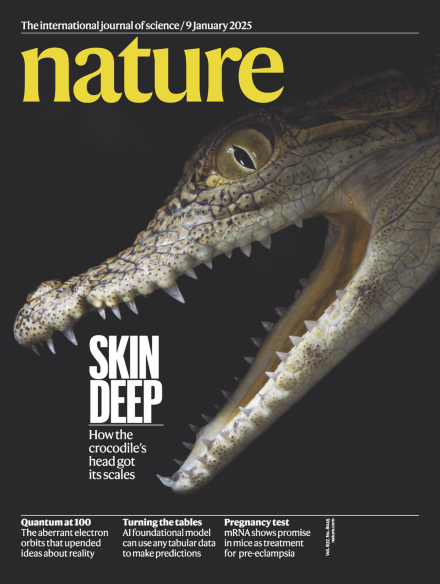Volume 637 Issue 8045, 9 January 2025
This Week
-
Editorial
-
-
Research Highlights
News in Focus
-
News
-
Features
Books & Arts
-
Essay
Opinion
-
Correspondence
Work
-
Feature
-
Where I Work
Research
-
News & Views
-
Reviews
-
Perspective
-
Articles
-
Matters Arising

